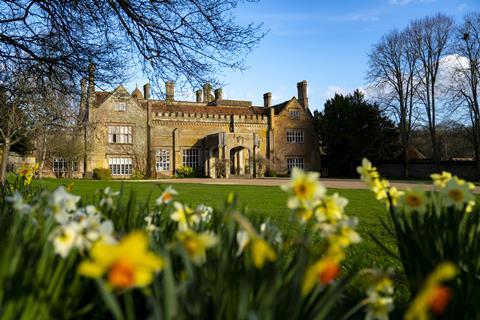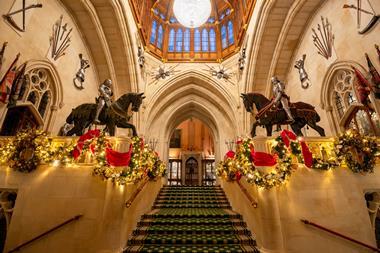Whether it be rare animals or Marwell Hall which has Tudor royal connections, here are six things for you and your group to look out for on your next trip to Marwell Zoo in Hampshire.
1. Singing siamang
When warmer weather approaches, the zoo’s siamang gibbons (pictured above) become far more vocal and visitors might hear them “singing” to each other. In the wild they do this to show the bond between the adult male and female of the group. Siamang pairs sing duets with the male and female taking different parts and the longer a siamang pair have been together the better developed their duet becomes. New pairs take time to coordinate their duets and lone male siamang perform solos. The sound made by siamang gibbons is amplified by a large inflatable throat-sac.
2. Marwell Hall
Once owned by Sir Henry Seymour, the younger brother of Henry VIII’s third wife Jane Seymour, Marwell Hall still shows signs of its Tudor and royal connections. Sir Henry was also the uncle of the young Tudor King Edward VI and the king’s coat of arms, which were once fixed above the main door, are still on view, now set into a magnificent fireplace in the main hall of the building.

The original medieval hall was built from stone and timber around 1320 and the intricate roof of this building still exists today. Marwell Hall as it looks today was rebuilt around 1816 and is now a Grade I listed building that still sits, as it has for 700 years, at the heart of the landscape.
3. Look for “hidden” windows
Sometimes it might be tricky to see the animals straight away, but there are loads of viewing windows around Marwell’s animal enclosures that might just give you the perfect view. For instance, you can see its Visayan warty pigs from the siamang walkway, but there’s also a viewing window at the side of their outdoor area that gives great opportunities to see them up close.
4. Get up close to rare snails
Marwell is home to four species of Polynesian tree snail, of which three species are extinct in the wild. You can see these shelled creatures alongside a Brazilian Salmon Tarantula in the room off the walkthrough to the Fur, Feather and Scales playground (opposite Bushtucker Bites). Some of these snail species live up to 17 years.

5. Historic Yews
Marwell Zoo has approximately 100 yew trees and 400 yew hedge plants around the park. Yew trees (Taxus baccata) are one of only four evergreen trees that are native to the UK and are believed to live up to 5,000 years.
Every yew tree at Marwell was planted long before the grounds became a zoo. The oldest tree in the park is believed to be around 700 years old and was planted around the time Marwell Hall was built. ‘Yew Tree Walk’ can be found behind the hall and is a very old and much loved landscape feature of the original estate.

6. The wishing well
Nestled in the corner of Marwell Hall’s lawn is a wishing well, where people have been making wishes for centuries. It’s quite tucked away but worth a visit and who knows, your wishes could come true. All money from your wishes goes toward the care of the zoo’s animals and conservation work in the UK and overseas.
Groups qualify for discounted admission to Marwell Zoo. More information is available at www.marwell.org.uk/group-visits.













